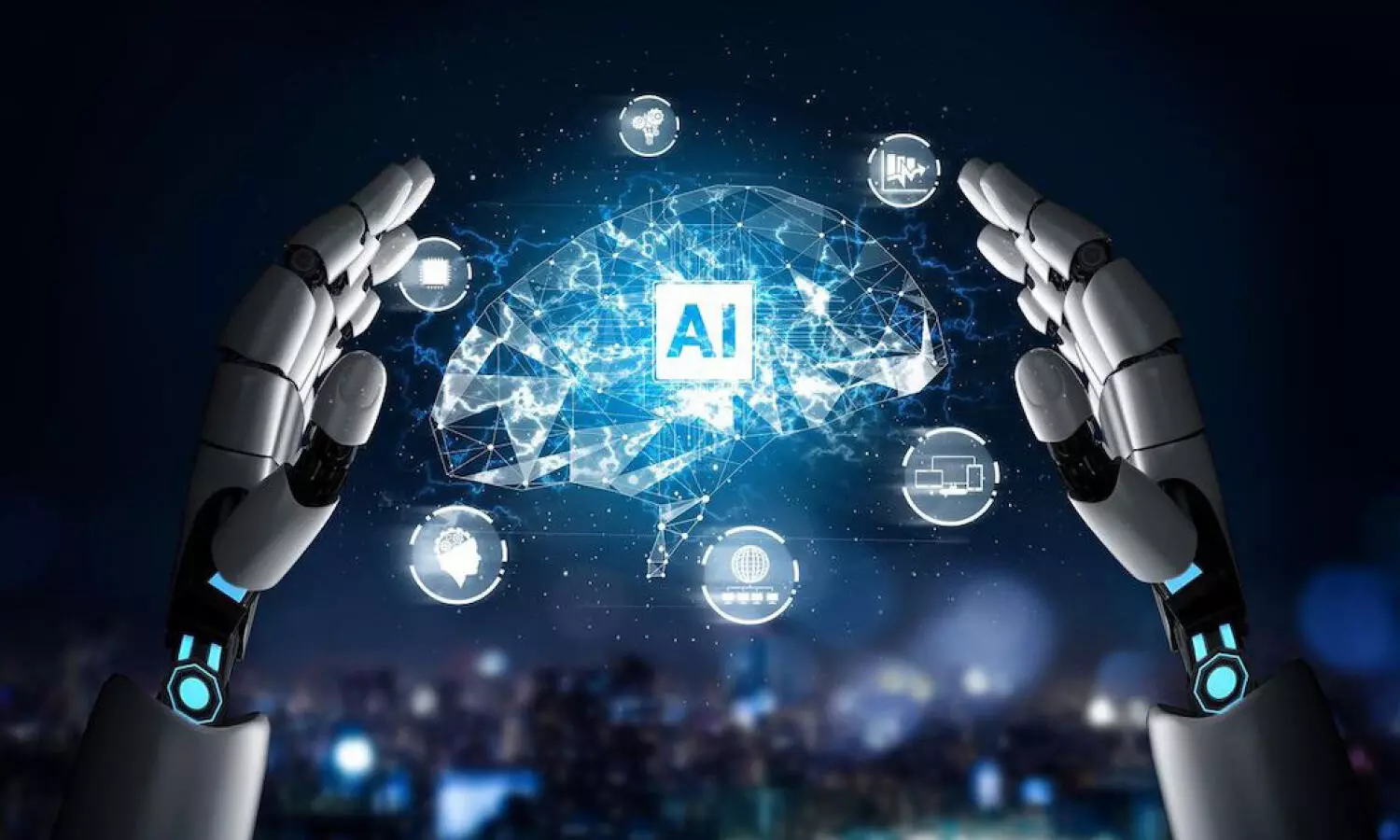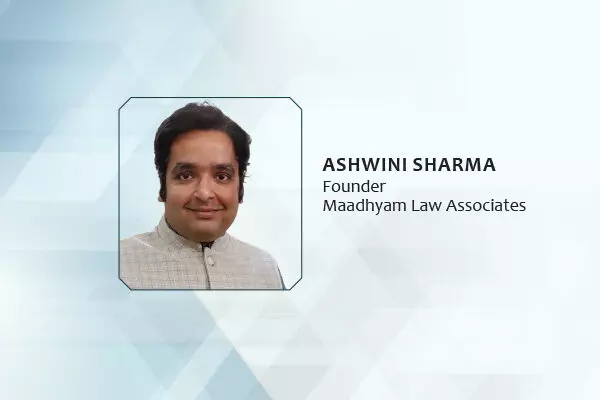- Home
- News
- Articles+
- Aerospace
- Artificial Intelligence
- Agriculture
- Alternate Dispute Resolution
- Arbitration & Mediation
- Banking and Finance
- Bankruptcy
- Book Review
- Bribery & Corruption
- Commercial Litigation
- Competition Law
- Conference Reports
- Consumer Products
- Contract
- Corporate Governance
- Corporate Law
- Covid-19
- Cryptocurrency
- Cybersecurity
- Data Protection
- Defence
- Digital Economy
- E-commerce
- Employment Law
- Energy and Natural Resources
- Entertainment and Sports Law
- Environmental Law
- Environmental, Social, and Governance
- Foreign Direct Investment
- Food and Beverage
- Gaming
- Health Care
- IBC Diaries
- In Focus
- Inclusion & Diversity
- Insurance Law
- Intellectual Property
- International Law
- IP & Tech Era
- Know the Law
- Labour Laws
- Law & Policy and Regulation
- Litigation
- Litigation Funding
- Manufacturing
- Mergers & Acquisitions
- NFTs
- Privacy
- Private Equity
- Project Finance
- Real Estate
- Risk and Compliance
- Student Corner
- Take On Board
- Tax
- Technology Media and Telecom
- Tributes
- Viewpoint
- Zoom In
- Law Firms
- In-House
- Rankings
- E-Magazine
- Legal Era TV
- Events
- Middle East
- Africa
- News
- Articles
- Aerospace
- Artificial Intelligence
- Agriculture
- Alternate Dispute Resolution
- Arbitration & Mediation
- Banking and Finance
- Bankruptcy
- Book Review
- Bribery & Corruption
- Commercial Litigation
- Competition Law
- Conference Reports
- Consumer Products
- Contract
- Corporate Governance
- Corporate Law
- Covid-19
- Cryptocurrency
- Cybersecurity
- Data Protection
- Defence
- Digital Economy
- E-commerce
- Employment Law
- Energy and Natural Resources
- Entertainment and Sports Law
- Environmental Law
- Environmental, Social, and Governance
- Foreign Direct Investment
- Food and Beverage
- Gaming
- Health Care
- IBC Diaries
- In Focus
- Inclusion & Diversity
- Insurance Law
- Intellectual Property
- International Law
- IP & Tech Era
- Know the Law
- Labour Laws
- Law & Policy and Regulation
- Litigation
- Litigation Funding
- Manufacturing
- Mergers & Acquisitions
- NFTs
- Privacy
- Private Equity
- Project Finance
- Real Estate
- Risk and Compliance
- Student Corner
- Take On Board
- Tax
- Technology Media and Telecom
- Tributes
- Viewpoint
- Zoom In
- Law Firms
- In-House
- Rankings
- E-Magazine
- Legal Era TV
- Events
- Middle East
- Africa

Determining the author in an AI Generated Work
Determining the author in an AI Generated Work

Determining the author in an AI Generated Work One way of addressing the question of whether Generative Artificial Intelligence (“Gen. AI”) outputs should be entitled to copyright protection is to understand whether or not Gen. AI can be considered as an ‘author’ within the provisions of the Copyright Act (“Act”). Article 3 of the Berne Convention for the protection of...
To Read the Full Story, Subscribe to Legal Era News
Access Exclusive Legal Era Stories, Editorial Insights, and Expert Opinion.
Already a subscriber? Sign in Now
Determining the author in an AI Generated Work
One way of addressing the question of whether Generative Artificial Intelligence (“Gen. AI”) outputs should be entitled to copyright protection is to understand whether or not Gen. AI can be considered as an ‘author’ within the provisions of the Copyright Act (“Act”).
Article 3 of the Berne Convention for the protection of literary and artistic works, 1886, contemplates authors as ‘nationals’. Article 6 is concerned about the author’s reputation or honour, in context of their morality rights and also prescribes a method to protect the same after the author's death.
The Act, 1957 also contemplates author as a ‘human’ at several provisions. For e.g., Section 2(l) contemplates author as a ‘citizen’, and Section 13(2)(i) requires Indian citizenship as a condition precedent to copyrightability under the Act. Section 7 considers domicile as a relevant factor for determining author’s nationality. Sections 17(a) and 17(c) contemplates author in the role of an ‘employee’. Section 22 links duration of copyright protection to author’s lifetime and death. Section 57 states that an author alone shall have the special right to claim authorship of their work, and empowers them to protect their ‘honour and reputation’ by preventing unauthorised modification of their works.

The sum total of the provisions so outlined is that copyrightability of a work is dependent on the existence of a human. On this basis, output by Gen. AI is incapable of claiming authorship and consequently copyright protection.
However, if a human uses Gen. AI to produce some output, then should that human be entitled to claim authorship and consequently copyrightability of that output?
In this regard, it is important to consider Section 2(d)(vi) which defines that in relation to any literary, dramatic, musical or artistic work which is computer generated, the author shall mean the person who causes the work to be created. Section 2(ffb) of the Act, 1957 defines a “computer” very broadly, by stating that a computer includes any electronic or similar device having information processing capabilities. The Act, 1957 does not define a “computer generated work”. As AI/Gen. AI is a computer programme, it is not a device per se, however, the said computer programme is run via a third party computer that is accessed through an internet connection. Therefore, this author considers it safe to presume that output produced by Gen. AI can be treated as computer generated works.
The question then becomes, whether a person that prompts a Gen. AI to produce outputs, can claim authorship over the generated works? As per Section 2(d)(vi), such a person can claim authorship after showing that said person caused the work to be created. At first brush, the solution seems to be straightforward, but it is in fact complicated by further considerations such as whether that person can be a corporate entity, and to what extent does that person have to be in proximity to the causation that created the work?
In the definition of composer1, the word ‘person’ is used along with the pronoun ‘he’, but in the definition of producer2, no such use is made, which can imply that a producer can be an entrepreneur instead of being the creator. Further,one may refer to the Indian Copyright Office’s Practice and ProcedureManual (2018)issued for literary3 and artistic works4 which suggests that the author can only be a natural person, but the manual issued for cinematographic works5, musical works6, and sound recordings7 do not make any such explicit mention.
To answer the second consideration as to how proximate must a creator be to the act of creation to claim authorship, the following provisions may be examined.
1. Section 2(d)(i), uses the term, ‘author’ to refer to the creator of a literary or dramatic work;
2. Section 2(d)(iii), uses the term, ‘artist’ to refer to the creator of an artistic work other than a photograph; and
3. Section 2(d)(iv) uses the term, ‘person taking the photograph’ to refer to the creator of a photograph.
A reading of the foregoing provisions would reveal that authorship is claimed by the person who directly records the works as well, such as by writing, or drawing, or by taking a photograph.
In contrast, the following provisions offer a different possibility.
1. Section 2(d)(ii), uses the term, ‘composer’ to refer to the creator of a musical work; and
2. Section 2(d)(v) which uses the term, ‘producer’ to refer to the creator of a cinematographic film or a sound recording;
For the above two definitions,it is irrelevant for the creator to be directly involved in the act of recordation of the work, while requiring their involvement in an ‘entrepreneurial capacity’. Thus, in the case of a musical work, the author should have created the musical work, even if the author does not record its notations graphically or otherwise, and in the case of cinematographic film, the author should have assumed initiative and responsibility for making the work, even if the author does not record the film or develop its prints.
Thus, Section 2(d)(vi) which speaks of an author in the context of a computer generated works cannot deviate from the underlying principles of determining authorship, which are present in the Act, 1957. In light of the above discussion, this author submits that the words, ‘causes the work to be created’ implies direct proximity to the act of creation, but indirect proximity to the act of recordation. In other words, it is suggested that the requirement of direct proximity to the act of creation can be fulfilled only if it can be shown that the person claiming authorship is directly involved in the act of creation of the output by application of personal skill and judgment. The fact that the act of recordation of output was automated and fast-paced and generated by computational methods will not act in the way of depriving authorship to the person who uses such automated computational instruments.
However, claiming authorship is one thing and copyrightability is another. This author submits that mere manifestation of authorship alone is not sufficient for copyrightability, which requires the works to be ‘original’ in addition to being created by a human author. After the Indian apex court’s decision in Eastern Book Company v. D B Modak8, and a catena of decisions that followed thereafter9, it is now a settled principle that copyrightability in derivative works depends also on application of skill and judgment in addition to use of labour and capital.
Therefore, even if a person may claim authorship for outputs produced by Gen. AI, it may not amount to much, if such outputs then fail the standard of originality required to be fulfilled for enjoyment of copyright protection.
2. Section 2 (uu) “producer”, in relation to a cinematograph film or sound recording, means a person who takes the initiative and responsibility for making the work.
3. Practice and Procedure Manual for Literary Works, Copyright Office (2018), p. 9. Available at https://copyright.gov.in/Documents/Manuals/LITERARY_MANUAL.pdf. Last visited 21stMarch, 2023.
4. Practice and Procedure Manual for Artistic Works, Copyright Office (2018), p. 8. Available at https://copyright.gov.in/Documents/Manuals/Artistic_Manual.pdf. Last visited 21stMarch, 2023.
5. See Practice and Procedure Manual for Cinematographic Works. https://copyright.gov.in/Documents/Manuals/CINEMATOGRAPH_MANUAL.pdf. Last visited 21stMarch, 2023.
6. See Practice and Procedure Manual for Musical Works. https://copyright.gov.in/Documents/Manuals/MUSICAL_MANUAL.pdf. Last visited 21stMarch, 2023.
7. SeePractice and Procedure Manual for Sound Recordings https://copyright.gov.in/Documents/Manuals/SOUND_RECORDING_MANUAL.pdf. Last visited 21stMarch, 2023.
8. AIR 2008 SC 209
9. See Reckeweg v. Adven (2008) 38 PTC 308, and University of Cambridge v B.D. Bhandari 2011 SCC OnLine Del 3215. In Tech Plus Media (P) Ltd. v Jyoti Janda2014 SCC OnLine Del 1819, Navigators Logistics Ltd. v Kashif Qureshi2018 SCC OnLine 11321 and Satish Kumar v Khushboo Singh2019 SCC OnLine US SC 10671


